Introduction
In the vast culinary landscape of Asia, steamed buns, often referred to as “mantou” in Chinese, occupy a unique and cherished place. These simple yet profoundly satisfying dough-based treats are a staple in many Asian households, serving as both a comforting breakfast option and a versatile accompaniment to various dishes. The perfect steamed bun is characterized by its soft, fluffy texture and slightly sweet, mild flavor, making it an irresistible delight for both the young and old alike. However, achieving this level of perfection can be a daunting task for those unfamiliar with the intricacies of dough preparation and steaming techniques. This comprehensive guide aims to demystify the process and empower you with the knowledge and skills necessary to create soft and delicious steamed buns at home.
Understanding the Ingredients
Before diving into the recipe, it’s crucial to understand the role of each ingredient in the creation of a stellar steamed bun.
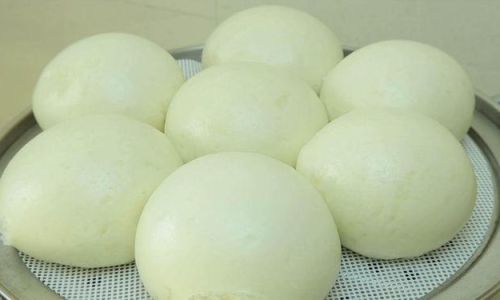
-
Flour: The foundation of any dough, all-purpose flour is typically used for steamed buns due to its balance of protein and gluten content, which contributes to structure without making the dough too tough. For an even softer texture, some recipes incorporate a small percentage of cake flour or bread flour.
-
Water: Acts as the hydrating agent, enabling the gluten proteins in the flour to form a network that traps air bubbles during fermentation, leading to a fluffy texture. The exact amount of water may vary depending on the humidity and type of flour used.
-
Yeast: Essential for leavening, active dry yeast or instant yeast ferments the dough, producing carbon dioxide that expands the gluten network and gives the buns their lift.
-
Sugar: Provides food for the yeast, accelerating fermentation and adding a hint of sweetness to the final product.
-
Salt: Enhances flavor and strengthens the gluten structure, ensuring the dough holds its shape during steaming.
-
Oil: Adds moisture and tenderness to the dough, preventing it from becoming too dry or dense.
-
Milk or Dairy Products (Optional): For added richness and a subtle creamy flavor, a splash of milk or a knead-in of butter can elevate the taste and texture of the buns.
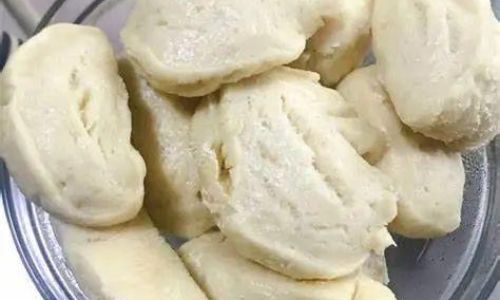
Step-by-Step Recipe
Now, let’s walk through the process of making soft and delicious steamed buns, broken down into manageable steps.
Preparing the Dough
-
Combine Dry Ingredients: In a large mixing bowl, whisk together 4 cups of all-purpose flour, 1/4 cup of granulated sugar, and 1 teaspoon of salt. Make a well in the center.
-
Activate the Yeast: In a small bowl, warm 1/2 cup of water to about 110°F (45°C). Sprinkle in 2 1/4 teaspoons of active dry yeast and let it sit for 5 minutes until frothy. This indicates that the yeast is active and ready to use.
-
Mix Wet and Dry Ingredients: Pour the yeast mixture and an additional 1 cup of lukewarm water into the well in the flour mixture. Add 2 tablespoons of vegetable oil. Using a wooden spoon or dough hook attachment on a stand mixer, mix until a shaggy dough forms.
-
Knead the Dough: Transfer the dough to a lightly floured surface and knead for about 8-10 minutes until it becomes smooth, elastic, and slightly tacky but not sticky. If the dough is too sticky, add a little more flour; if it’s too dry, add a few drops of water.
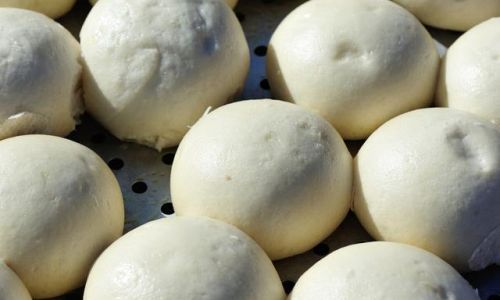
First Fermentation
- Rest the Dough: Place the dough in a lightly oiled bowl, turning it once to coat it with oil. Cover the bowl with a damp cloth or plastic wrap and let it rise in a warm, draft-free place for about 1-2 hours, or until it has doubled in size.
Shaping the Buns
-
Punch Down the Dough: Once the dough has risen, punch it down to release any air bubbles.
-
Divide and Shape: Transfer the dough to a lightly floured surface and divide it into equal portions, typically around 12-16 pieces depending on desired size. Shape each portion into a smooth ball by cupping your hands around it and rotating it on the work surface.
-
Second Proofing: Place the shaped buns on a parchment-lined baking sheet, spacing them apart to allow for expansion. Cover with a clean kitchen towel and let them rest for another 30 minutes to an hour, or until they have puffed up slightly.
Preparing for Steaming
-
Fill the Steamer: While the buns are undergoing their second proof, fill a bamboo steamer or a metal steamer with water and bring it to a boil over high heat. If using a metal steamer, line the bottom with parchment paper or a silicone steaming mat to prevent sticking.
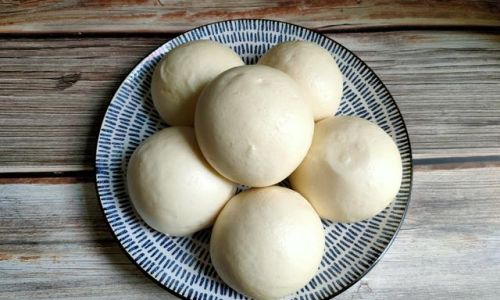
-
Arrange the Buns: Carefully lift the proofed buns and place them in the steamer basket, ensuring they are not overcrowded. Leave some space between them to allow for even steaming.
Steaming the Buns
-
Steam the Buns: Once the water is boiling, place the steamer lid on securely and reduce the heat to medium-high. Steam the buns for about 12-15 minutes, depending on their size. Avoid opening the lid frequently, as this can cause the buns to collapse.
-
Check for Doneness: After the specified time, gently lift the lid a crack to check if the buns are cooked. They should be a light, even color and feel springy to the touch.
Cooling and Serving
-
Cool Slightly: Remove the steamed buns from the steamer and let them cool on a wire rack for a few minutes. This helps them set and prevents them from becoming soggy.
-
Serve Warm: Enjoy the buns warm, plain, or with your favorite fillings such as red bean paste, meat, or vegetables.
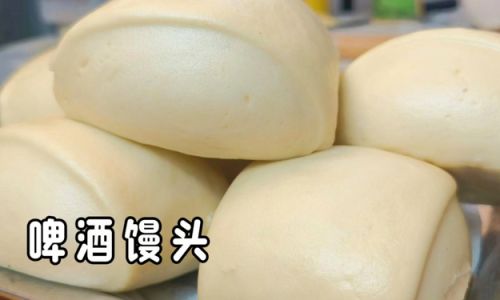
Troubleshooting Tips
-
Dense Texture: Ensure proper kneading and fermentation. Over-kneading can make the dough tough, while insufficient fermentation will result in dense buns.
-
Collapsing Buns: Avoid opening the steamer lid too early or too frequently during steaming. Sudden temperature changes can cause the buns to collapse.
-
Sticky Dough: Use enough flour when shaping and proofing to prevent sticking. A lightly floured surface and hands can make a big difference.
Conclusion
Mastering the art of making soft and delicious steamed buns requires patience, attention to detail, and a bit of practice. By understanding the role of each ingredient and carefully following the steps outlined in this guide, you’ll be well-equipped to create buns that are not only visually appealing but also a joy to eat. Whether you’re serving them as a simple breakfast treat or incorporating them into a more elaborate meal, steamed buns offer a versatile and comforting addition to any table. Happy baking!



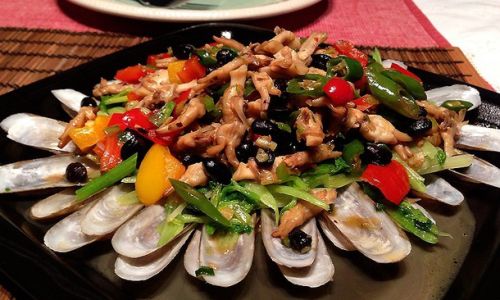
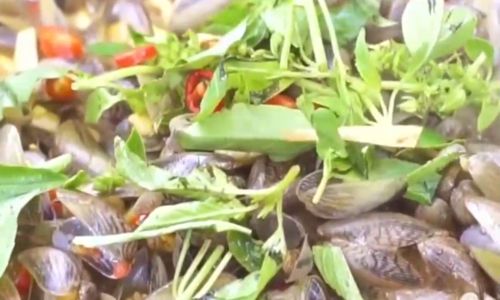
0 comments